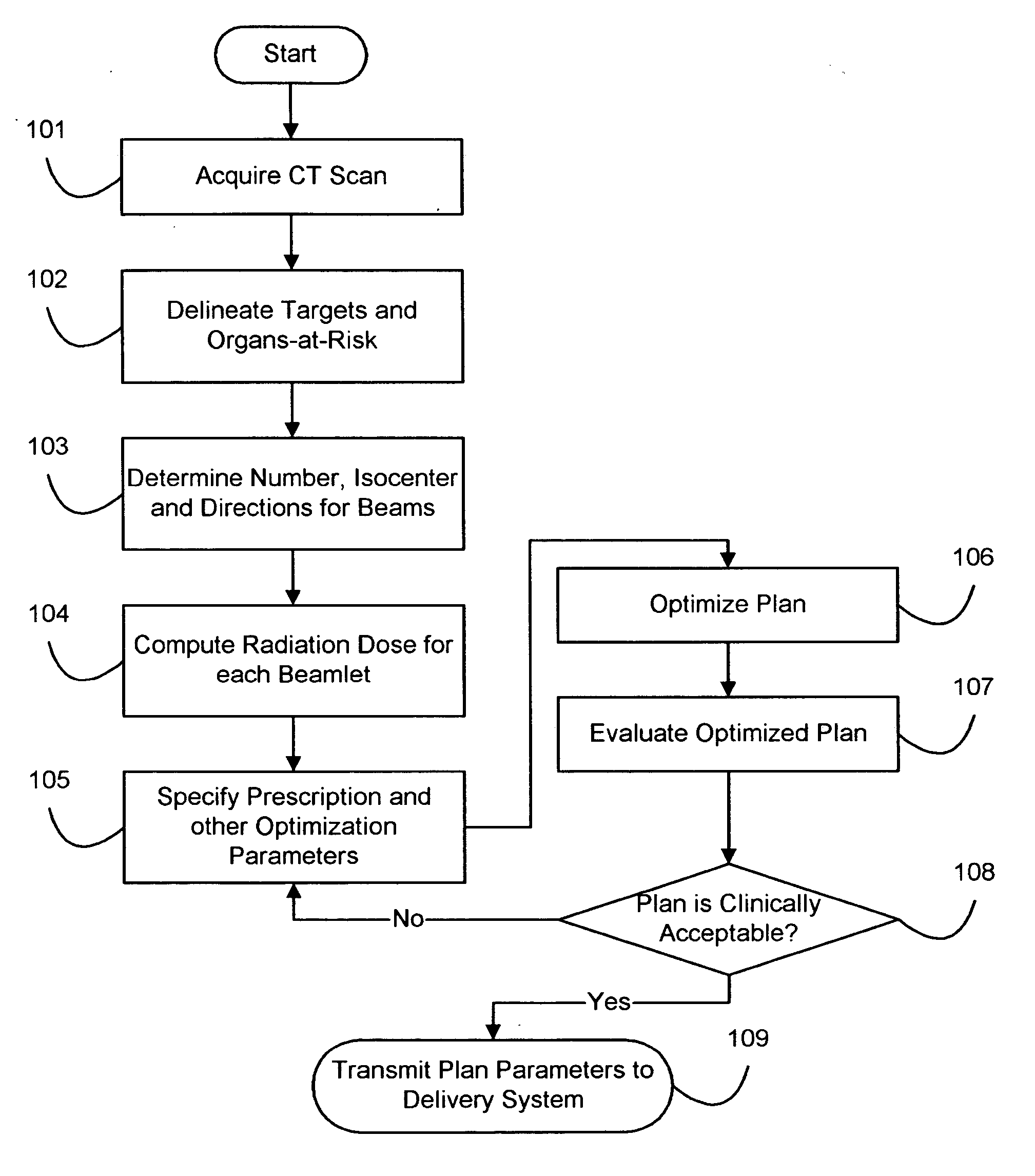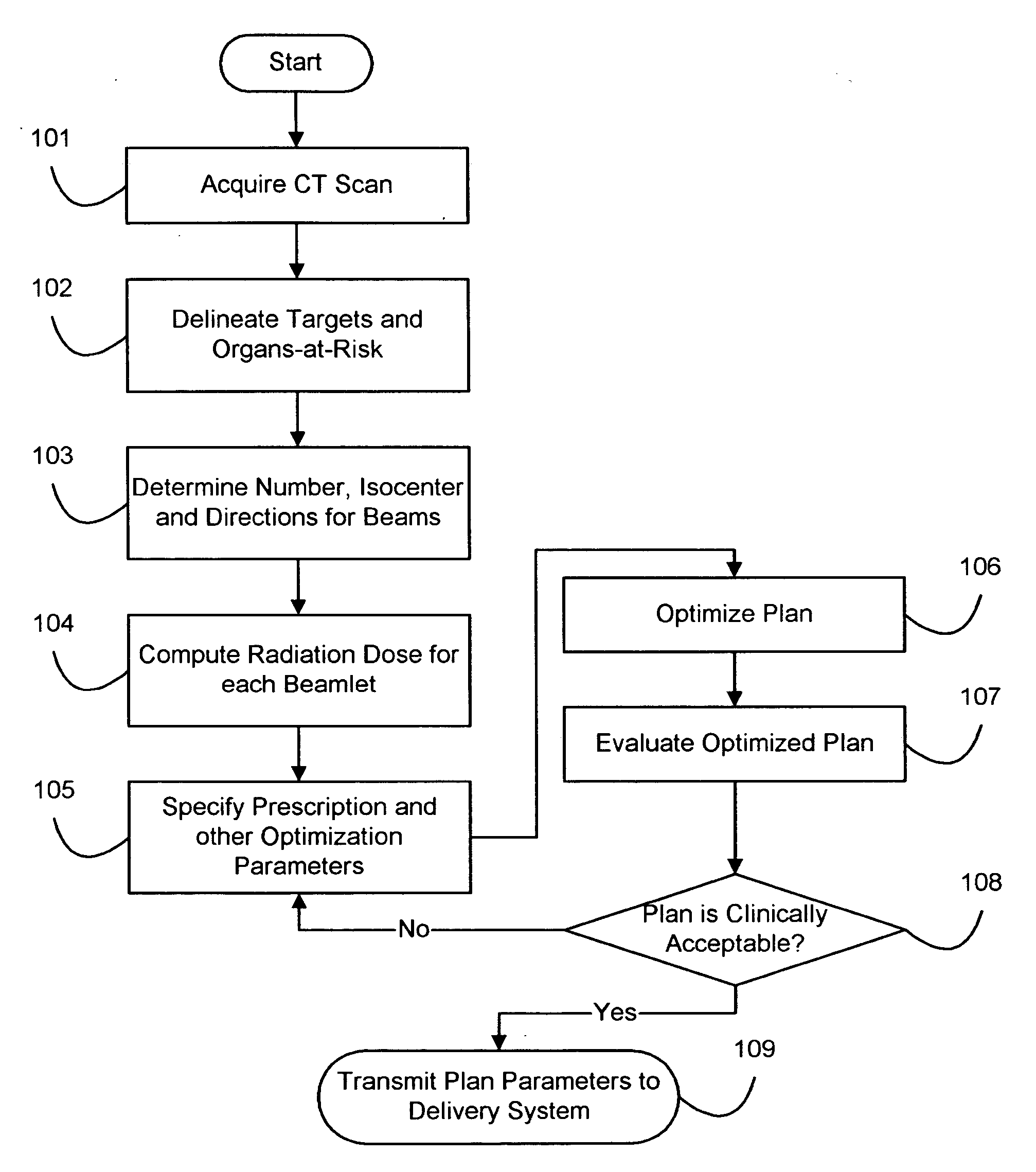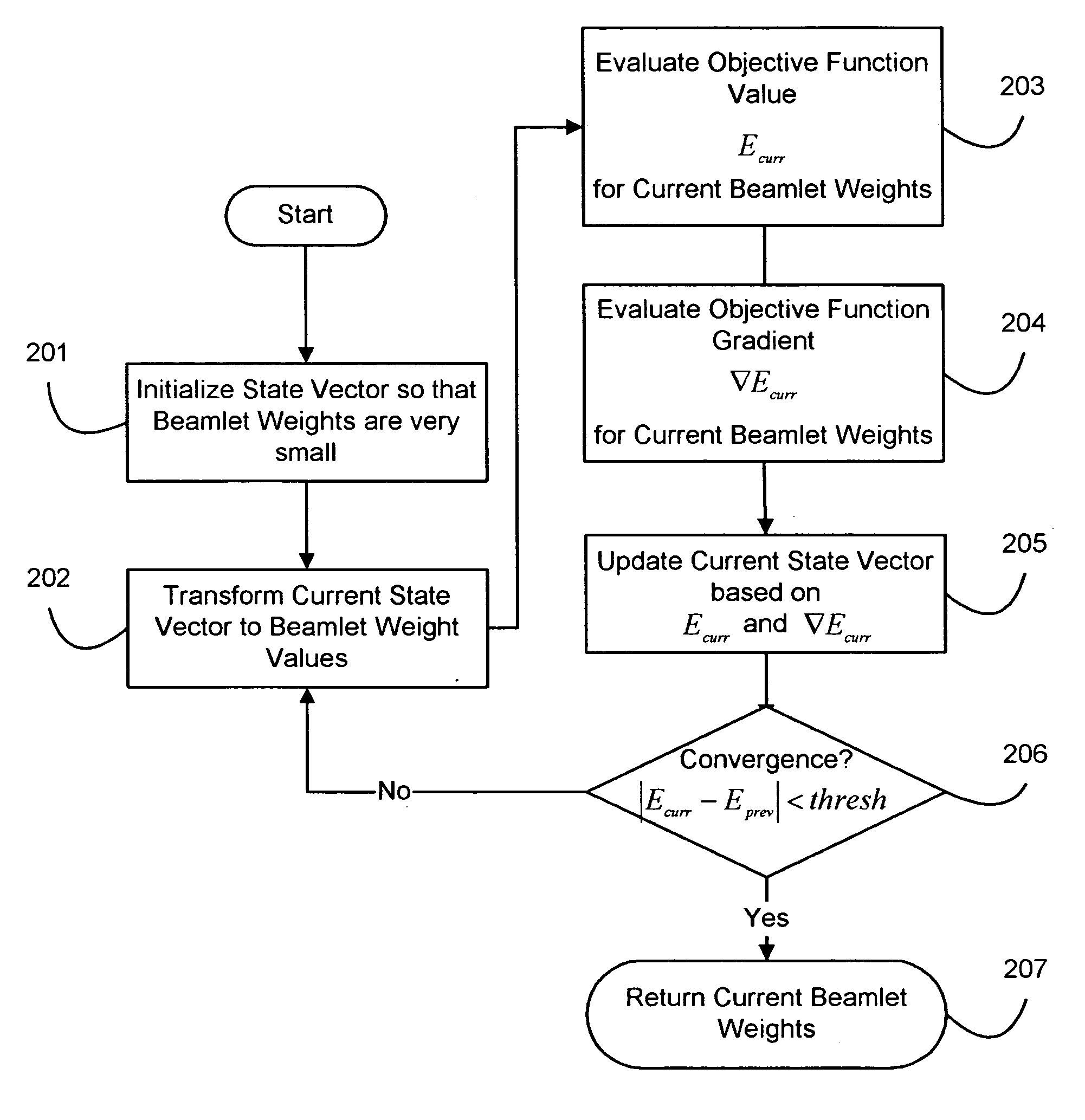Fast gradient-histogram inverse planning technique for radiation treatment
a radiation treatment and gradient-histogram technology, applied in radiation therapy, x-ray/gamma-ray/particle-irradiation therapy, etc., can solve the problems of large input parameter dimensionality, and optimization may spend an inordinate amount of time searching in “useless” directions. , to achieve the effect of more robust solutions and easy interaction
- Summary
- Abstract
- Description
- Claims
- Application Information
AI Technical Summary
Benefits of technology
Problems solved by technology
Method used
Image
Examples
Embodiment Construction
Theory of Operation-Functional Histogram for an Image or Volume
[0051] The computation of a histogram for an image or volume can be represented as a simple algorithm that iterates over the image or volume points, accumulating pixel / voxel counts for each bin of the histogram. This is depicted in FIG. 4, for the related case of PDF computation. For purposes of treating the histogram (or PDF) analytically, the algorithmic form is not ideal.
[0052] For analysis, a functional description of the histogram is more appropriate. The functional description relates the value of each histogram bin to some function of pixel / voxel values, summed over the image or volume. For a discrete image I(x,y), the functional form of a simple histogram of the image is the set of bin values Hi given by Hi=∑y∑xu[I(x,y)-midi](1)
where midi is the midpoint of bin i, and u(r) is the histogram's binning kernel, defined by the scaled discrete unit impulse with width w U(r)={1if-w2≤rw20otherwise(2)
[0053] In ...
PUM
 Login to View More
Login to View More Abstract
Description
Claims
Application Information
 Login to View More
Login to View More - R&D
- Intellectual Property
- Life Sciences
- Materials
- Tech Scout
- Unparalleled Data Quality
- Higher Quality Content
- 60% Fewer Hallucinations
Browse by: Latest US Patents, China's latest patents, Technical Efficacy Thesaurus, Application Domain, Technology Topic, Popular Technical Reports.
© 2025 PatSnap. All rights reserved.Legal|Privacy policy|Modern Slavery Act Transparency Statement|Sitemap|About US| Contact US: help@patsnap.com



